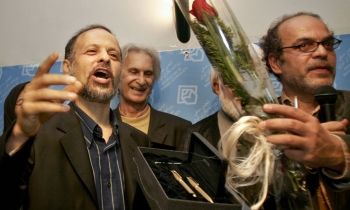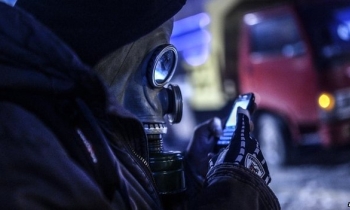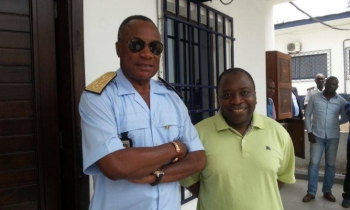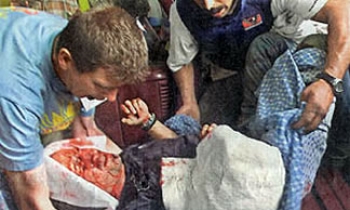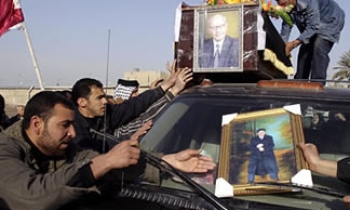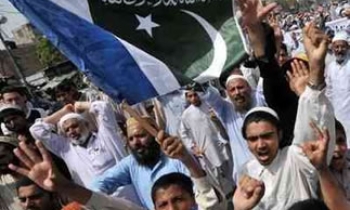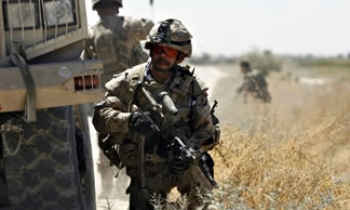Fifty-seven journalists were killed in connection with their work in 2010, 25 per cent fewer than in 2009, when the total was 76. The number of journalists killed in war zones has fallen in recent years. Significantly, it is becoming more and more difficult to identify those responsible in cases in which journalists were killed by criminal gangs, armed groups, religious organisations or state agents, according to Paris-based press freedom group Reporters sans Frontières (RSF).
“Fewer journalists were killed in war zones than in preceding years,” RSF Secretary-General Jean-François Julliard said. “Media workers are above all being murdered by criminals and traffickers of various kinds. Organised crime groups and militias are their leading killers worldwide. The challenge now is to rein in this phenomenon. The authorities of the countries concerned have a direct duty to combat the impunity surrounding these murders. If governments do not make every effort to punish the murderers of journalists, they become their accomplices.”
Journalists as bargaining chips
Another distinguishing feature of 2010 was the major increase in abudctions of journalists. There were 29 cases in 2008, 33 in 2009 and 51 in 2010. Journalists are seen less and less as outside observers. Their neutrality and the nature of their work are no longer respected. “Abductions of journalists are becoming more and more frequent and are taking place in more countries.” RSF said.
“For the first time, no continent escaped this evil in 2010. Journalists are turning into bargaining chips. Kidnappers take hostages in order to finance their criminal activities, make governments comply with their demands, and send a message to the public. Abduction provides them with a form of publicity. Here again, governments must do more to identify them and bring them to justice. Otherwise reporters – national or foreign – will no longer venture into certain regions and will abandon the local population to their sad fate.”
Journalists were particularly exposed to this kind of risk in Afghanistan and Nigeria in 2010. The case of French TV journalists Hervé Ghesquière and Stéphane Taponier and their three Afghan assistants, held hostage in Afghanistan since December 29, 2009, is the longest abduction in the history of the French media since the end of the 1980s.
No region of the world spared
Journalists were killed in 25 countries in 2010. This is the first time since RSF began keeping these tallies that journalists have been murdered in so many countries. Almost 30 per cent of the countries (seven in total) were African countries: Angola, Cameroon, Democratic Republic of Congo, Nigeria, Rwanda, Somalia and Uganda. But the deadliest continent by far was Asia with 20 cases, and this was due above all to the heavy toll in Pakistan, where 11 journalists were killed in 2010.
Of the 67 countries where there have been murders of journalists in the past 10 years, there are eight where they keep recurring: Afghanistan, Colombia, Iraq, Mexico, Pakistan, Philippines, Russia, and Somalia. These countries have not evolved; a culture of violence against the press has become deeply rooted there. Pakistan, Iraq and Mexico have been the three most violent countries for journalists during the past decade.
The passing years have brought no changes to Pakistan, with journalists continuing to be targeted by Islamists groups or to be the collateral victims of suicide bombings. This total of 11 killed was the highest of the year. Iraq saw a return to earlier levels of violence with a total of seven journalists killed in 2010 as against four in 2009. Most of them were killed after the United States announced that all of its combat troops had been withdrawn in August.
Journalists are caught in a trap between the different sectors – including local authorities, those involved in corruption and religious groups that refuse to accept media independence. In Mexico, the extreme violence of the drug traffickers affects the entire population including journalists, who are particularly exposed.
This has a major impact on reporting, with journalists reducing their coverage of crime stories to the minimum in order to take as few risks as possible. In Central America, three were killed in Honduras in 2010 in connection with their work. Politically-motivated violence since the June 2008 coup d’état has com pounded the “traditional violence” of organised crime, a major phenomenon in this part of the world.
In Thailand, where newspapers are able to enjoy relative independence despite recurring press freedom violations, 2010 was a very tough year. Two foreign journalists, Fabio Polenghi of Italy and Hiroyuki Muramoto of Japan, were killed in clashes between government forces and Red Shirts (supporters of former Prime Minister Thaksin Shinawatra) in Bangkok in April and May. The shots that killed them were very probably fired by the members of the army.
Even the internet no longer a refuge
RSF is continuing to investigate the June 2010 death of the young netizen Khaled Mohammed Said, who was arrested by two plain-clothes police officers in an Internet café, taken outside and beaten to death in the street. There were reports that his death was prompted by a video posted online that incriminated the police in a drug deal. Autopsy reports attributed his death to a drug overdose, but this was belied by photos of his body.
The number of arrests and physical attacks on netizens in 2010 was similar to previous years. Harassment of bloggers and censorship of the Internet have become commonplace. There are no longer any taboos about online filtering. Censorship is taking new forms: more aggres- sive online propaganda and increasingly frequent use of cyber-attacks as way to silence bothersome Internet users. Significantly, online censorship is no longer necessarily the work of repressive regimes. Democracies are now examining and adopting new laws that pose a threat to free speech on the Internet.
Exile – the last resort
Many journalists flee abroad to escape violence and oppression. A total of 127 journalists from 23 countries did this in 2010. The exodus from Iran continues. For the second year running, it was the biggest source of fugitive journalists – 30 cases registered by RSF in 2010. The Horn of Africa continues to shed journalists. Around 15 fled Eritrea and Somalia in 2010. The year also saw the forced exile of 18 Cuban journalists, who had been jailed since March 2003 and who were released on condition that they immediately leave for Spain.


